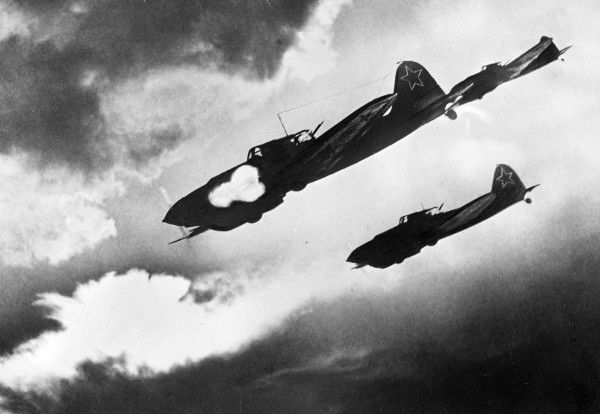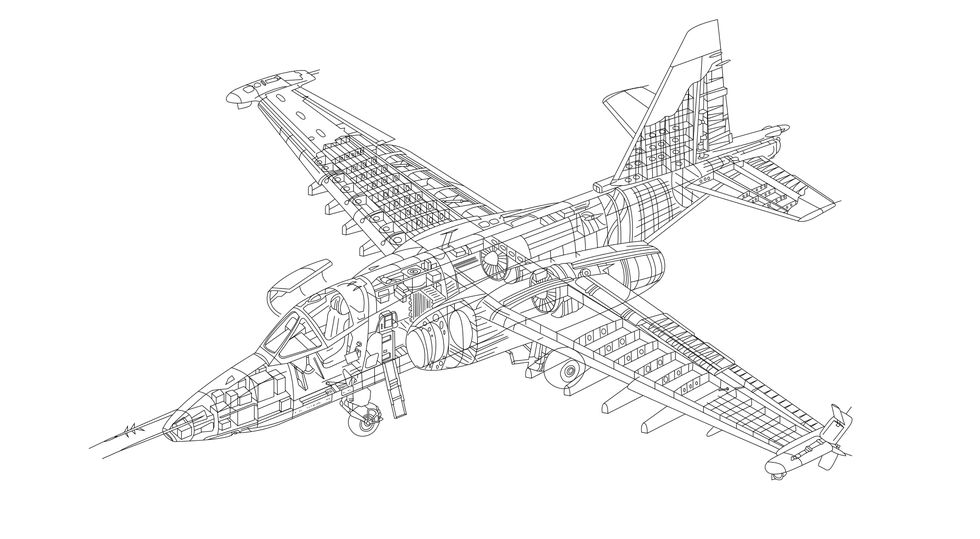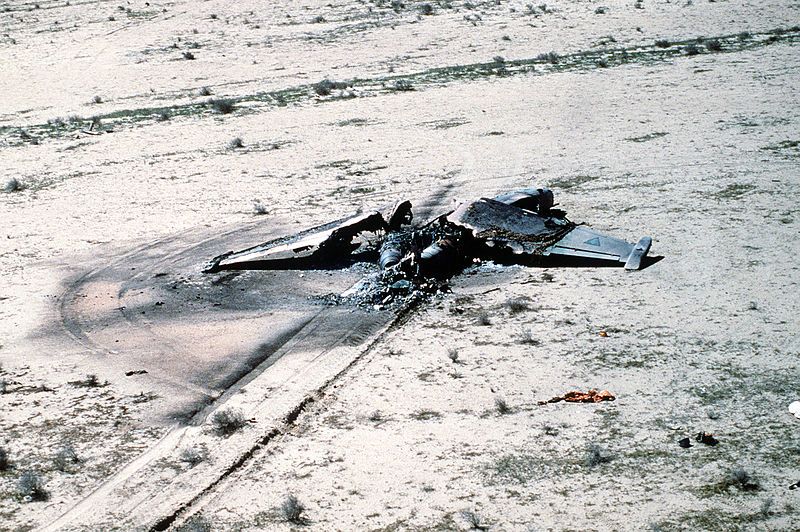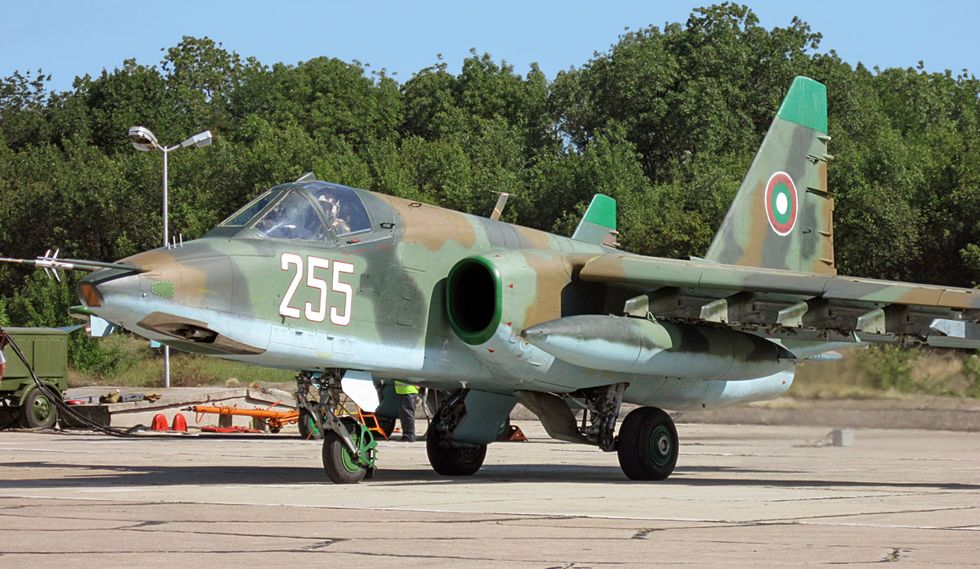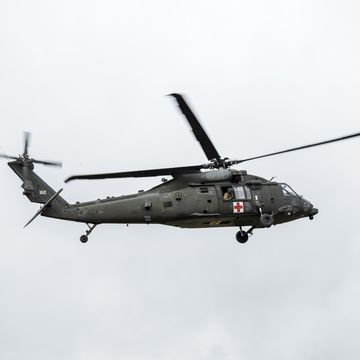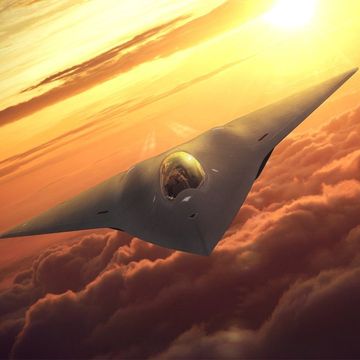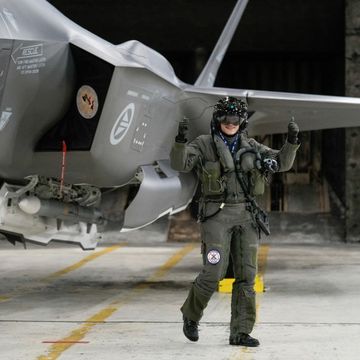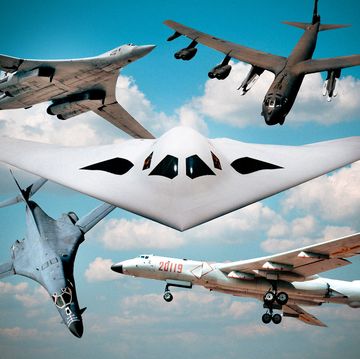At the height of the Cold War, the world's two superpowers created a new pair of battlefield aircraft, similar in both power and purpose. One was the U.S.'s revered A-10 Thunderbolt II, also known affectionately as the Warthog. Its Soviet cousin, originally revealed in 1981, was the Sukhoi Su-25 Grach. While the Soviet call sign "Grach" means "rook," the USSR's adversary NATO gave the Su-25 a much less imposing designation: the "Frogfoot."
The A-10 has become a legend—an iconic aircraft that can change the course of a battle with a strafing blast of its 30mm GAU-8 cannon, and fights on even today in the skies over Iraq and Syria. But make no mistake: Its Russian counterpart is a fearsome beast, too.
The Soviet Rook
During World War II, the Soviet Air Force pioneered close air support tactics with robust ground-attack aircraft like the Ilyushin Il-2. The Soviets developed the propeller-driven Ilyushin Il-2 'Sturmovik' as a heavily armored 'flying tank' that could take a lot of punishment as it blasted Nazi tanks with cannons, rockets, and bombs. These aircraft were used a lot during the huge tank battle at Kursk in 1943, where they had a terrifying psychological effect and destroyed numerous German vehicles.
By the late 1960s, however, the Soviets were in desperate need of a dedicated ground attack aircraft to replace the Sukhoi Su-7B, a low-level fighter designed for air to air combat with other fighter jets. So, in 1969 Sukhoi began developing the T8, making its first flight as the Su-25 six years later. The Frogfoot was designed to decimate the enemy's armored vehicles if the Cold War suddenly turned hot, and these aerial terrors were expected to cause havoc on the North German Plain where the major tanks battles were expected to be fought.
The 1970s was the time the United States Air Force launched its own A-X Close Air Support Aircraft program that would produce the Warthog. The USSR was watching the U.S. closely, and the evidence of this eagle-eyed recon is seen in the Sukhoi itself. Russia's aircraft shares a number of features with the A-10 including a powerful main auto-cannon for taking out armored vehicles, an armored cockpit enclosure, and 11 hardpoints for mounting a range of weapons. Even the differences, such as the Frogfoot's more conventionally aerodynamic shape, also point to some cribbed design notes—in this case from the A-10 stateside competitor, the Northrop YA-9.
During tests, the T8 beat out the Ilyushin Il-102 to become Russia's new ground attack plane. Renamed the Su-25, it began production in 1978. The following year, the Soviet minister of defense, Dmitry Ustinov, asked why the air force was testing planes in Russia when "there is an ideal testing ground with severe environmental and real combat conditions." This ideal testing ground was Afghanistan, where the Soviet Union was propping up Babrak Karmal's communist government against Mujahideen rebels.
Two prototype Su-25s carried out real combat testing during the early days of the Soviet-Afghan war. In only a few weeks, Frogfoot began proving its worth. Once the Su-25 entered service, the USSR deployed 50 more Frogfoots to support troops during the eight-year war. Soviet Frogfoot pilots flew approximately 60,000 sorties, carrying free-falling and laser-guided bombs, missiles, and unguided rockets.
The Frogfoot's most impressive weapon, though, was its Gryazev-Shipunov GSh-30-2 30mm auto-cannon, capable of firing a blistering 2,500 to 3,000 rounds per minute. The cannon weighs significantly less than the A-10's own fearsome gun. The Su-25 has a nose-mounted laser rangefinder that assists with target acquisition, allowing the cannon's high explosive and depleted uranium armor-piercing shells to find their mark. For devastating strafing runs in Afghanistan, the Su-25 was sometimes fitted with wing-mounted 23mm cannon pods that wreaked havoc on the battlefield.
Lessons Learned
The Su-25's ability to survive aerial scraps was completely unmatched by other Soviet aircraft. That's because like the A-10, the Frogfoot has a welded titanium armored compartment—up to 25mm thick in places—that encloses the lower half of the cockpit to protect the pilot from anti-aircraft ground fire.
But that advantage wouldn't last.
The problem was that the Frogfoot's twin engines were simply too close together. While they could continue to work independently if one was damaged, fire from the destroyed engine would quickly deliver the same fate to the other. Although a steel firewall and a fire suppression system improved things, the Su-25 could not change the tide of the war, as CIA-supplied Stinger surface-to-air missiles assisted the Afghan fighters.
Even so, the aircraft unquestionably emerged as a major addition to the Soviet Air Force. In the years to come, it would be adopted by over a dozen countries and adapted to conflicts in the central Africa, eastern Europe, and the Middle East in the coming years.
More than a thousand Su-25s have been built since 1978 along with several variants. Modern Su-25s have an impressive array of countermeasures included a missile approach warning system, chaff and flare launchers, and an infrared jammer to confuse enemy missiles. Because the plane can both deliver and take a punch, countries like Iraq, Iran, Sudan, Ethiopia, and many former Soviet states also use Frogfoots.
During the Iran-Iraq war in the 1980s, the Iraqi Air Force became the first non-Warsaw Pact nation to operate the Su-25. Iraqi Frogfoots performed well against Iranian armor and only one of about 70 jets was destroyed by Iranian air defenses. The Su-25 would not fare so well in the Persian Gulf War, however. Iraqi Frogfoot squadrons suffered heavy losses not in the air but on the ground, with the U.S.-led Coalition's overwhelming air superiority blowing up the planes before they could even take off. The two Iraqi Frogfoots that managed to get airborne were overwhelmed and destroyed by F-15Cs.
Russian Frogfoots again saw action during the Chechen Wars of the 1990s and during the 2008 Russo-Georgian War. This time, both sides used Su-25s to provide air support during fighting in South Ossetia. Despite Russia's success, Georgian anti-aircraft defenses destroyed three Russian Su-25s. This prompted accelerated efforts to upgrade Russia's Su-25 fleet.
The Future of the Frogfoot
Since late 2015, a dozen modernized Russian Su-25SMs have been operating over Syria during Russia's military intervention. Just as the USAF's A-10s have been supporting the Iraqi army, Russian Frogfoots have been conducting close air support operations against ISIS and the rebel groups opposing Assad's government. Russian news agencies report that Su-25s have dropped more than 6,000 bombs.
But in April 2016, Russia pulled its Su-25s out of Syria and replaced them with Mi-28 helicopters. These helicopters have one key advantage over the Su-25—onboard missile jamming systems, which the Su-25s were only just receiving. In October 2016, it was reported for the first time that Su-25SM3's, upgraded with missile jamming systems, were again in Syria—likely just another "ideal testing ground."
Russia built the last Su-25 in 1992. And yet, a quarter-century later, the idea of restarting the program is gaining ground. Meanwhile, the U.S. Air Force has pushed hard for the retirement of the Warthog, despite its battlefield effectiveness and popularity, to offset the cost of the new F-35 (another a military program that hangs in the balance.)
But the Frogfoot's future is clear—at least in the short term—with work steadily progressing on the Su-25SM program, which is projected to continue until 2020. Russian troops can expect support from the Su-25 for several more years.
While the A-10 may have the bigger gun, a bigger fuel tank, and a greater range of munitions, the smaller, simpler and cheaper Frogfoot is lighter, faster, nimbler and has longer range. After nearly 40 years in service neither of these Cold War rivals are done yet.



